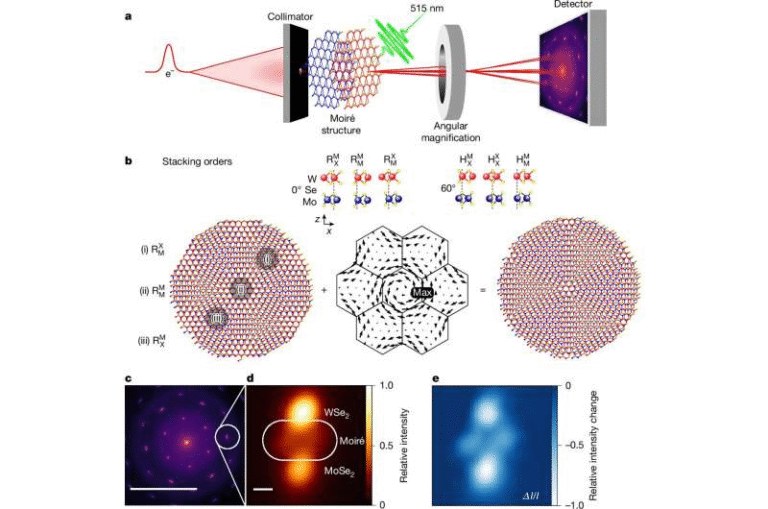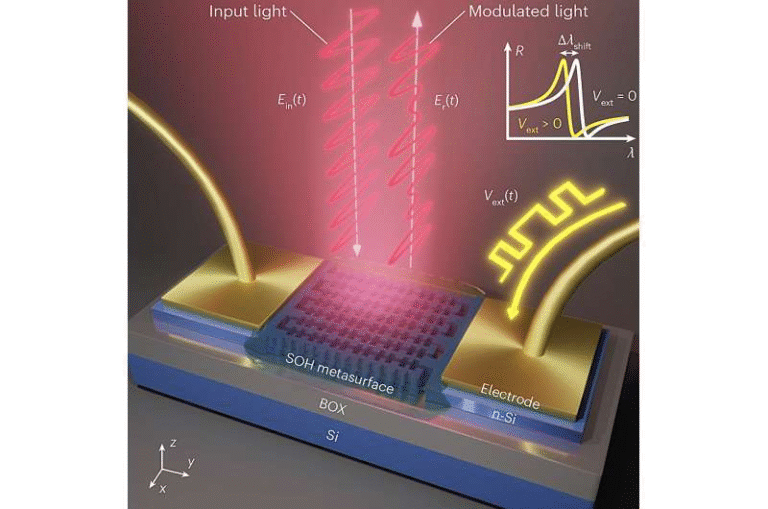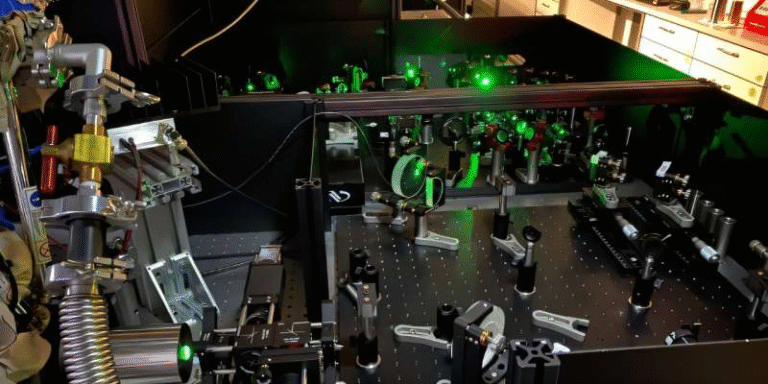A Strong Magnetic Field Just Revealed a Strange “Duality” Hidden Inside an Exotic Material

Researchers have uncovered something deeply puzzling inside a material that, on paper, shouldn’t behave this way at all. Working with ytterbium boride (YbB₁₂)—a material known as a Kondo insulator—a team of scientists led by Lu Li from the University of Michigan has observed something that defies conventional physics. Under extreme magnetic fields, this electrical insulator starts behaving like a metal, exhibiting quantum oscillations that are normally only seen in conductors.
This discovery doesn’t yet have a clear technological application, but it challenges fundamental ideas about how matter behaves under strong magnetic fields. It also hints at what Li calls a “new duality”—materials that can act both like conductors and insulators depending on their internal quantum conditions.
Understanding What the Team Found
The experiments took place at the National Magnetic Field Laboratory, home to some of the most powerful magnets on Earth. The team subjected YbB₁₂ to magnetic fields as strong as 35 tesla, about 35 times stronger than those in an MRI machine, while cooling the material to ultra-low temperatures around 0.8 kelvin (close to absolute zero).
Under these conditions, the researchers detected quantum oscillations in the material’s heat capacity. Normally, such oscillations appear in metals, where the free electrons move in tight, spiral-like paths under a magnetic field. These paths, called Landau levels, lead to oscillations in physical properties like electrical resistance and magnetization. But YbB₁₂ is not a metal—it’s an insulator, meaning its electrons should be locked in place and unable to contribute to such behavior.
Still, the data was unmistakable. The oscillations corresponded to a frequency of about 670 tesla, matching earlier findings from magnetoresistance and torque magnetometry experiments on the same material. The strength of these oscillations was also significant—about 13% of YbB₁₂’s known heat-capacity coefficient, a strong indication that this effect isn’t just a tiny surface feature. It seems to involve the bulk of the material.
Why This Is So Strange
The key question is how an insulator can show metal-like behavior. Traditionally, materials are classified as either conductors (metals) or insulators, based on whether electrons can move freely. In conductors, electrons form what’s called a Fermi surface—a kind of boundary in energy space that defines how electrons fill up energy levels. This surface gives rise to quantum oscillations when a magnetic field is applied.
In insulators, there shouldn’t be any Fermi surface at all because there’s a full energy gap that prevents electrons from moving freely. So when oscillations appear in YbB₁₂, it means something unconventional is happening inside the material.
Li’s team suspects the culprit might be neutral fermions—exotic quasiparticles that carry no electric charge but still behave like electrons in certain ways. Because they’re neutral, they wouldn’t contribute to electrical conduction, explaining why the material remains an insulator even while exhibiting metal-like quantum effects.
This finding gives new weight to the idea that some insulators might host “hidden metallic states”—not on their surfaces, but deep within their bulk.
The New Duality in Materials
Lu Li describes this as part of a “new duality” in materials physics. The “old duality,” which emerged during the birth of quantum mechanics more than a century ago, referred to the fact that light and matter can behave both as particles and waves. That idea revolutionized physics and gave rise to countless modern technologies, from semiconductors to electron microscopes.
Now, Li and his collaborators suggest that materials might have a similar kind of dual identity. Under the right conditions, something that appears to be an insulator could act like a conductor in certain aspects—revealing new layers of complexity in the way electrons (and possibly other quasiparticles) organize themselves.
However, there’s a catch. The strange metallic-like behavior only emerges under extreme magnetic fields of around 35 tesla and cryogenic temperatures. In other words, this isn’t something you can recreate in everyday lab conditions or use in electronic devices just yet.
Who Was Involved
The study brought together more than a dozen researchers from institutions across the United States and Japan. Along with Lu Li, the University of Michigan team included Kuan-Wen Chen (research fellow) and graduate students Yuan Zhu, Guoxin Zhen, Dechen Zhang, Aaron Chan, and Kaila Jenkins.
Their work focused on heat capacity measurements, which offer a direct thermodynamic probe into a material’s bulk properties. This is significant because other techniques—like electrical resistance or surface-sensitive probes—can sometimes be influenced by impurities or surface effects. The team’s results, therefore, provide strong evidence that the quantum oscillations originate within the bulk of YbB₁₂ itself.
A Bit More About Quantum Oscillations
To understand why these findings are so striking, it helps to know a bit about what quantum oscillations are. When a magnetic field is applied to a metal, the electrons’ motion becomes quantized into discrete levels (Landau levels). As the magnetic field strength changes, these levels move relative to the Fermi surface, causing periodic changes—oscillations—in measurable quantities like heat capacity, magnetization, or resistance.
The oscillation frequency depends on the size and shape of the Fermi surface, which tells scientists a lot about the underlying electronic structure of the material. Observing these oscillations in an insulator like YbB₁₂ means that some form of Fermi surface-like behavior must exist, even without mobile charges. That’s why the discovery is so mind-bending—it challenges what physicists thought they knew about how electrons behave in solids.
The Nature of Kondo Insulators
YbB₁₂ belongs to a family of materials called Kondo insulators, named after the Kondo effect, where conduction electrons interact strongly with localized magnetic moments from rare-earth atoms. At high temperatures, these materials behave like metals, but as they cool, these interactions open an energy gap that turns them into insulators.
Other famous Kondo insulators include samarium hexaboride (SmB₆), which has also shown unusual metallic surface states. However, in YbB₁₂’s case, the metallic-like behavior isn’t limited to the surface—it seems to come from within the bulk of the material. This is what makes the new findings particularly important.
Implications and Open Questions
For now, the discovery is purely fundamental. The researchers admit they don’t yet know how to use this phenomenon in practical technologies. But it could open up new research directions in quantum materials, strongly correlated systems, and even quantum computing.
The next big question is identifying exactly what kind of neutral particles are responsible for these oscillations. Are they spinons, composite fermions, or some new type of excitation altogether? Understanding that could reshape theories of electronic structure in correlated materials.
Another open question is whether this effect could appear under less extreme conditions—say, at lower magnetic fields or higher temperatures. If scientists can find ways to stabilize such behavior more easily, the phenomenon could eventually lead to new kinds of quantum devices or energy-efficient electronics.
Even without immediate applications, the findings force physicists to rethink the boundaries between metals and insulators. It’s another reminder that nature often blurs the lines we draw in textbooks.
Why This Matters
Every once in a while, physics uncovers something that’s simply too strange to fit into existing categories. YbB₁₂’s metallic behavior under extreme magnetic fields is one of those discoveries. It’s a reminder that quantum materials can host unexpected states of matter, where even an insulator can hum with the echoes of metallic motion.
As Lu Li put it in his reflections, these results don’t yet point to a practical use—but they mark an exciting step toward understanding the hidden complexities of quantum matter.
Research Paper: Quantum Oscillations in the Heat Capacity of Kondo Insulator YbB₁₂ – Physical Review Letters (2025)





